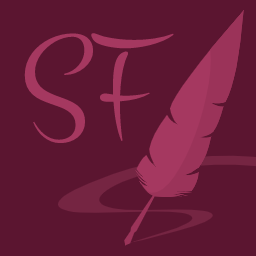Gradician Ferrets
This article is a stub
This article is a draft
Currently in review
Curious little things, gradician ferrets. They’ll walk to any old stranger and give them a good sniff. Apparently, they’re completely oblivious to the fact that the thing they’re approaching may or may not be a predator, or that they’re two steps away from becoming a meal. That, or they’re fearless.
In the wilds of the Lagrada Fields, just north of Las Sorenca, these ferrets roam free. As a social species it is not uncommon to see them roaming in large numbers, especially during the summer months.
Biological Characteristics
Long and slender, gradician ferrets are covered from head to tail in fur. In the summer months, where temperatures are typically warmer, their fur is a very light grey. During particularly hot periods their fur has been known to turn pure white. In the winter months, where temperatures are colder, their fur turns a darker grey colour. They have a band of reddish brown fur around their neck that remains the same throughout the entire year.
Offspring
Gradician ferrets can have up to 3 litters per year throughout the winter season. Litters are usually made up of around 2-5 kits.
For the first 14-18 days, newly born kits are blind and must rely on both their parents and their extremely good sense of smell in order to navigate the world. That said, most kits will remain in the den until they are able to see.
Gradician kits spend the first year or so of their lives with that darker grey fur colour. The brown band of fur around their neck takes about 3 months to come through. Once they start to develop that lighter grey fur colour for the summer months, they are considered fully grown gradician ferrets.
You lift the kit by its scruff, wary of sharp fangs it seems preoccupied with cleaning. Sariel watches you, barely containing light toned laughter, mirth shining in her eyes.
“What?” you ask, frowning.
She shakes her head and moves closer. Places her hand just below the kit’s tiny front legs and you reactively let go, knowing that Sariel would not let it fall. “She’s not about to bite your hand off, you know?”
Whatever protests you were about to spout die on your lips because, with a simple exhale, Sariel’s smirk transforms into a beaming smile. You have never seen her look so soft before. So vulnerable. Watching her… well, you think your heart might be about to melt.
Socialising
Gradician ferrets live in groups of about 10-15. They are very social and will often interact with other groups, especially during mating season. Kits of different groups are encouraged to play with each other by their elders.
They are such social creatures that they will approach complete strangers and sniff them, climb on them, or try to engage with them in a playful manner. This made it very easy for the healers in Las Sorenca to domesticate them and, whilst most domesticate gradician ferrets are used to collect twincross herbs, in recent years the citizens of Las Sorenca have started to keep them as pets.
An Exemplary Sense of Smell
Sight, hearing, taste, touch - for gradician ferrets, these sensations are mediocre. Their sense of smell, however, is impeccable.
From smell alone, they are able to differentiate between the most similar of things, from identical twins, to plants that both look and taste alike. The citizens of Las Sorenca have noted that they have excellent recall in this regard as well. After meeting someone for the first time, they will recognise them on the second meeting through scent alone.
This feat allows them to avoid poisonous plants and pick out the fresher, more mature plants and stretches of grass for their meals. It also makes them very good at finding twincross herbs which are used by alchemists to make healing salves and consumables. When injured, gradician ferrets will directly run to the nearest batch of twincross herbs for consumption by the injured party.
Gradicia Furo, G.Furo
In 1331 AL, healers in Las Sorenca noticed that gradician ferrets were gathering twincross herbs. Though not strange - after all, even animals need a way to heal their wounds or illnesses - they were able to distinguish between the batch of twincross herbs and the identical looking sariven herbs surrounding them.
Intrigued, some began to study the ferrets from afar. They noticed that the ferrets would sniff each herb and almost immediately turn their noses up at the sariven herbs, but not the twincross herbs. Soon after this revelation the healers sought to domesticate the ferrets - successfully, might I add - so that they might employ their strong sense of smell and make finding the correct healing herbs a whole lot easier.





I like that they're used for finding healing herbs. Very interesting
Thanks for reading! Because of my focus this year, I wanted to try and connect the prompts as much as possible, so these little guys are (indirectly) linked to prompt #1 through those healing herbs :)
Amalgia | Ma'rune | Osiron | Summer Camp 2024